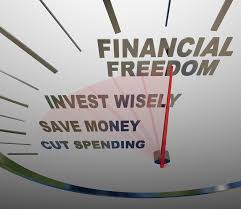
(UNDATED) – Whether you want to become debt-free, travel more or anything in-between, finances can be at the core of these goals.

To help you achieve your financial goals in 2020, here are 10 tips from Rebecca Gramuglia, Personal Finance Expert at TopCashback.com.
- Start living within your means. Spend, save and splurge within your means by implementing the ‘50/20/30’ rule. The 50/20/30 rule is a basic budgeting tool that is made to keep you on track with your financial goals year-round. Generally, you should spend only up to 50 percent of your after-tax income on essentials, such as housing; 20 percent on financial priorities, such as debt repayments and savings; and 30 percent on lifestyle choices, such as vacations. By following this rule, you will be able to better manage your finances by living within your means. Think of budgeting as a guide you set up to make sure your money is doing what you’re telling it to do.
- Track your spending. Making a budget and sticking to it is key to gaining financial freedom, but the way to do that is by tracking your expenses. Once you know where your money should go (bills, savings, etc.), list every expense on a spreadsheet for the first month to see if you’re on track. This will help you determine whether your budget is realistic and can give you an accurate picture of where your money is going and where you’d like it to go instead.
- If you’re techy: Skip the spreadsheets and track your spending electronically with your debit or credit card via the single-card method. Eliminate all cash expenses and only use debit or credit to help you manage your funds.
- Cut costs. Budgeting and tracking your expenses are not only great ways to maximize your spending habits but they’re also great ways to cut costs. Take a hard look at your expenses and see where you’re overspending so you can start spending less and saving more. Any money you “save” can go towards paying off debt or towards your retirement savings. For example, driving the “no tolls route,” is a costless alternative that can save you a hundred dollars (or more) a month.
- Set measurable goals. It’s easier to keep on track and hold yourself accountable when you set a goal that is specific and time-bound (ex: I want to save $X by March 1, 2020). To avoid feeling overwhelmed, make sure you know the difference between a long-term goal (costly vacations) and a short-term goal (a new electronic) to help you budget accordingly. Once you achieve your goal, increase the amount saved for the next time period.
- Create a debt payoff plan. For many, “financial freedom” means being debt-free. And to achieve debt-free status, try using the avalanche method. This cost-effective approach attacks high-interest debt first to save money in the long run. Focus on paying your highest account interest rate while simultaneously making minimum payments on all your other accounts. As each amount gets paid off, it’s minimum payments get added to the monthly payments for the next high-interest balance on your list. By the time you get to the last account on your list, you’ll be eliminating large chunks out each month, speeding up the debt payoff process.
- Have more than one savings account. Head into 2020 feeling motivated with separate savings accounts that will help create plans for your money. Dedicate each one to something in specific like an emergency fund, a vacation fund, and a house fund. Every time you contribute to an account you’ll see how far away you are from that goal. When you’re not saving for anything in particular and keeping all your money in just one account, it can be easy to lose momentum.
- Commit to no-spend days. If you find yourself constantly spending money, make it a point to assign at least one no-spend day per month. Eat at home, find free entertainment or even skip your daily coffee run to ensure no money leaves your hands or bank account for at least one day a month. The money you save could go towards your savings.
- Take advantage of all credit card rewards and offerings. Whether you prefer cashback offers or travel rewards, understand AND use what your credit card offers. With cashback rewards, you may able to customize what categories you earn the most on such as groceries, gas or online shopping. Or if 2020 has you catching the travel bug, learn about how you can cash-in rewards for airline miles.
- Use coupons, cashback sites, and shop sales to save money. Get more bang for your buck by bundling sales, coupons, promotions and using rebate sites. It is easier now more than ever to research discounts and price-match online to get the best deal on any item from travel to end-of-season sales. Once you’ve found the item you are looking for, double-check for any additional coupons, sales and deals to lower the price. Then, click through a cashback site such as TopCashback.com to receive cashback on all your online purchases at over 4,000 retailers. By bundling deals, you’ll save even more.
- Revise and tweak your budget. To excel at budgeting, it’s smart to constantly revise and adjust your budget according to your lifestyle. Your expenses, income, and priorities will change over time. Make it a habit to sit down and adjust/evaluate your budget every three months to ensure you are in line with your goals.



